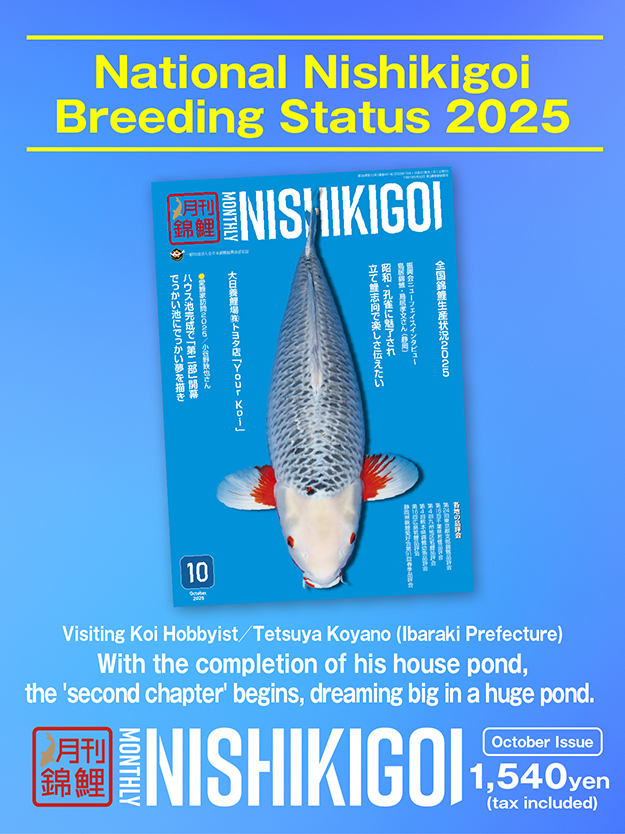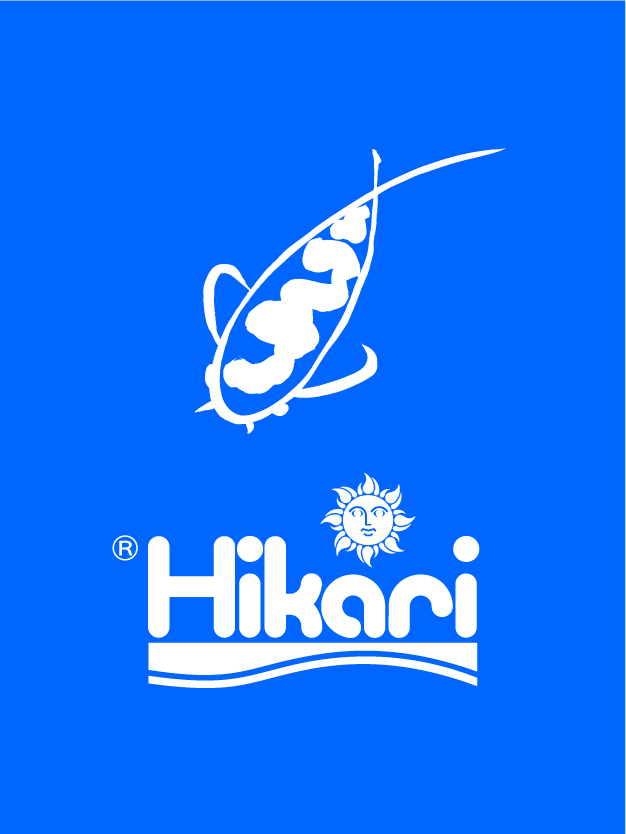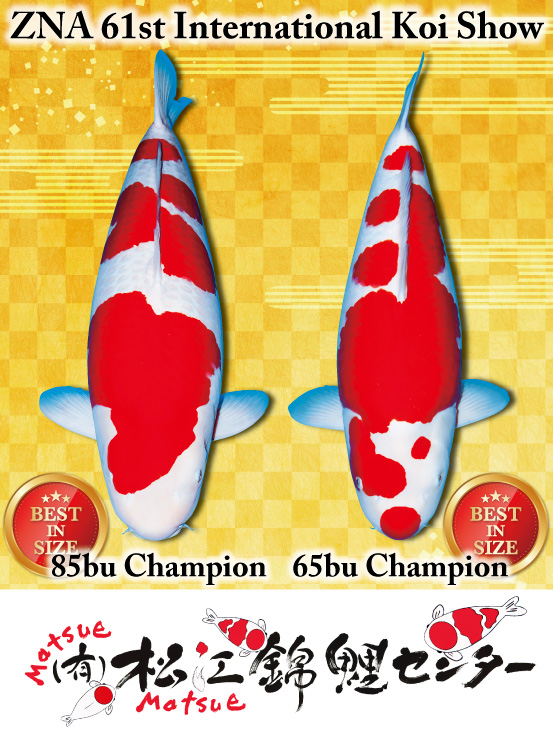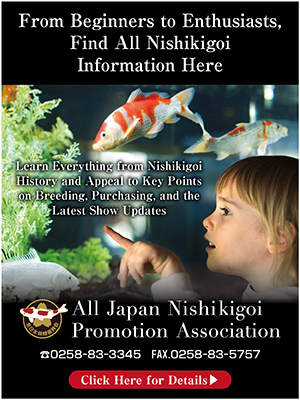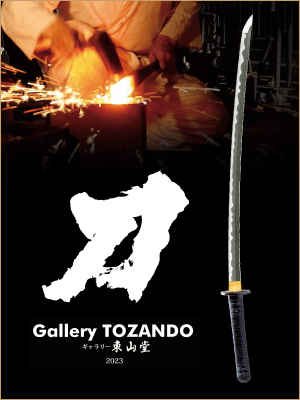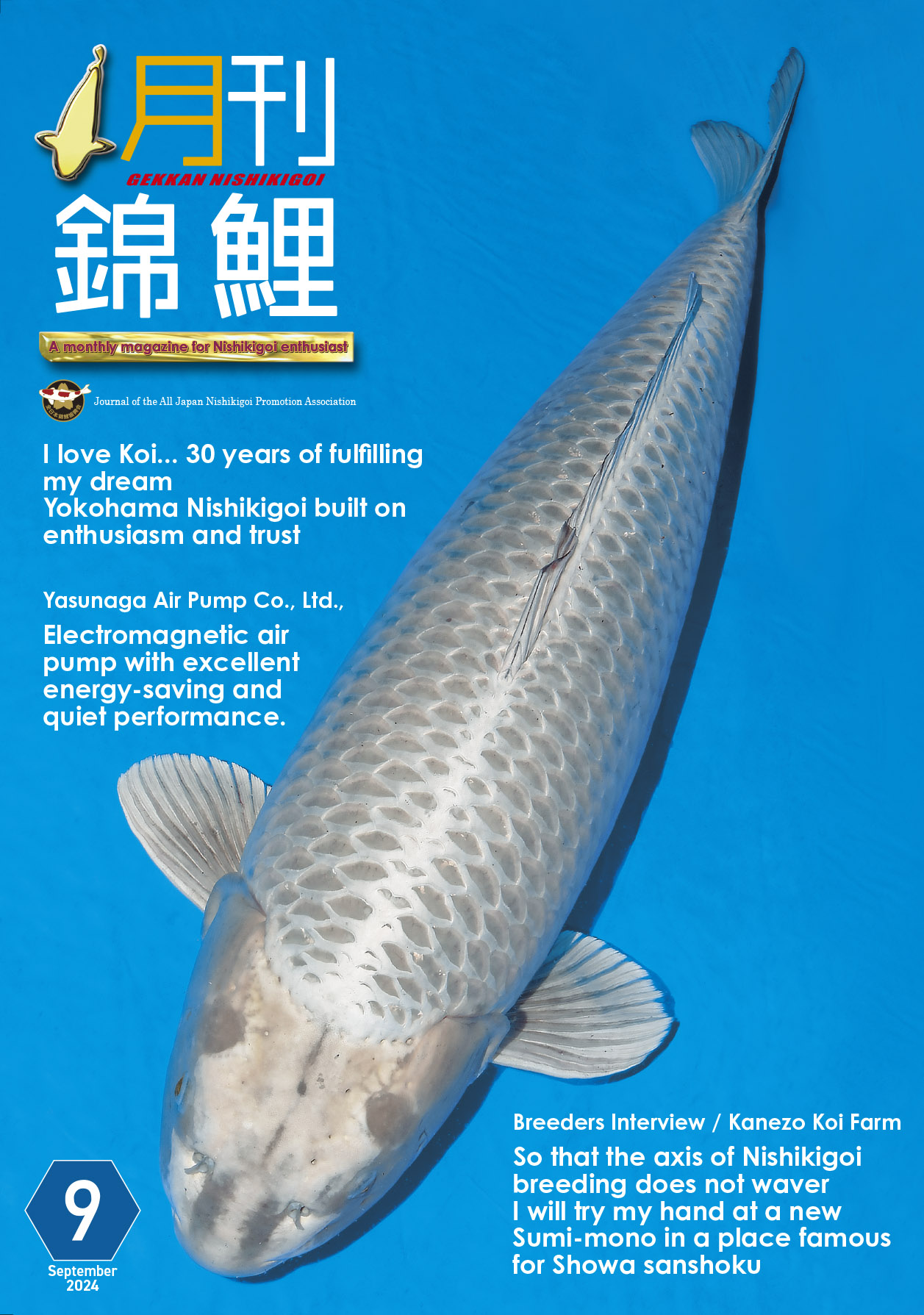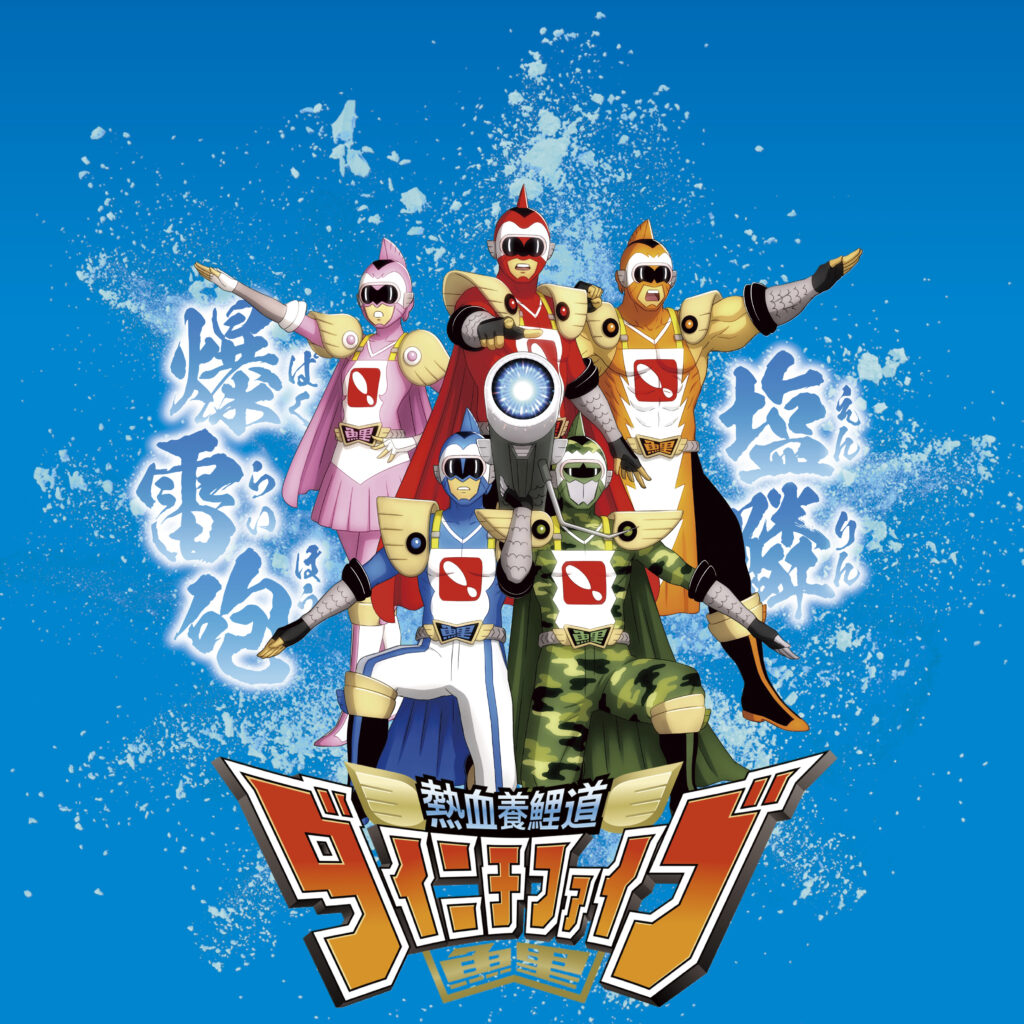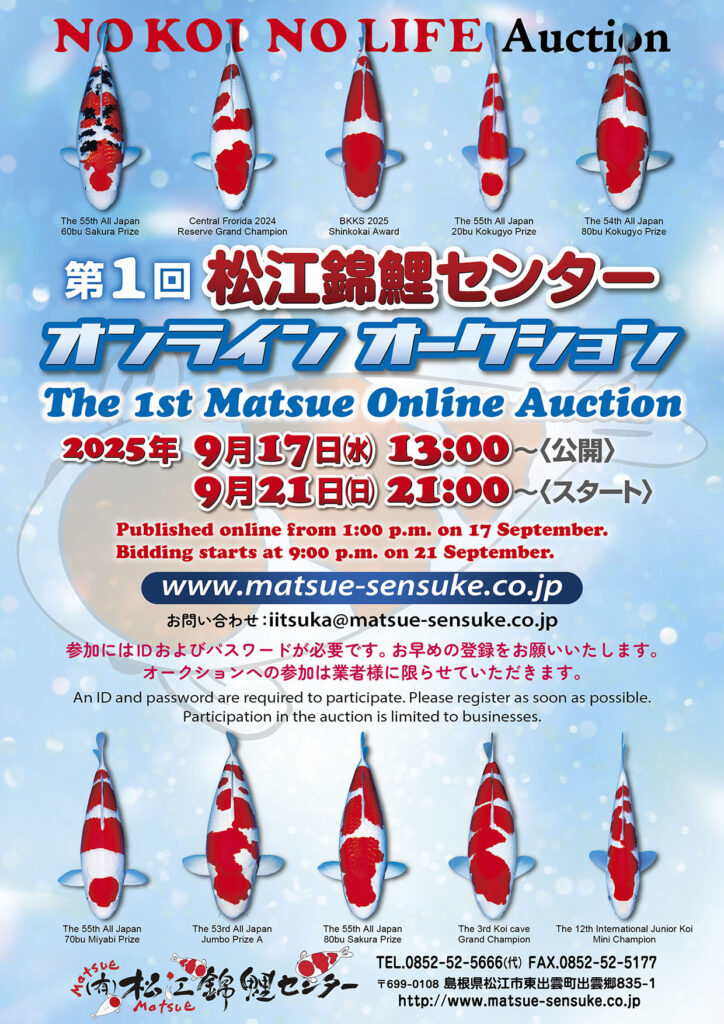— In other words, it’s not that you don’t want to use them, but you can’t?
Eiji: Yes.
— With limited scale, how is the survival rate of the fry?
Konishi: The survival rate of Kohaku fry was very good last year, the best I’ve ever had… but due to the scorching summer, the pattern had problems… We use the same method every year, and we’ve never had a situation before where the pattern faded due to high temperature, but it was especially hot last year, and there were many white fish (laughs).
— Indeed, it was exceptionally hot last year.
Eiji: It’s even hotter this year. The heat this year makes last year’s heat seem mild.
Konishi: But with the lessons from last year, we did a good job this year. There is abundant groundwater here, and we increased the water volume in the fry ponds to pre-vent the water temperature from rising, so we basically made up for last year’s loss (laughs).
— Are the ponds very deep?
Eiji: The fry ponds were originally used to raise eels, and the deepest part is about 1.2 meters.
Konishi: If the water is too deep, the temperature difference will be large, which is not good, so we didn’t make it very deep before. But this summer, we stored as much water as possible and added new water to try to lower the water temperature, and the effect was good.
— It seems we must treat abnormal weather as the norm.
Konishi: In the past, we put the parent koi in wild ponds, and they would naturally spawn when they grew up, but now that they are raised in spring water, they don’t spawn very much when they grow up.
Eiji: Compared to spawning at 6 or 7 years old, there is less risk of spawning at 3 or 4 years old. The physical condition is also more stable. Even if a fish looks like it can produce a lot of eggs, you won’t know the result until after spawning. Last year, two varieties of Kohaku and Showa failed.
 壮魚総合優勝 75部-紅白/大熊-堅二(福岡)-683x1024.jpg)
Mature Champion
75bu Kohaku / Okuma Kenji (Fukuoka)
 成魚総合優勝 55部-紅白/吉田-隆一(東京)-682x1024.jpg)
Adult Champion
55bu Kohaku / Yoshida Ryuichi (Tokyo)
The Sakai Kohaku produced in Matsue are of excellent quality
Migita Showa complements ours very well
— In a 2013 interview, you mentioned that the Kohaku were bred using female fish from Sakai and male fish from your own stock. Is that still the case now?
Kenji: Now, we mainly use the third generation of those fish as the female parent, paired with male fish from Mr. Matsue. Sometimes, we also use male fish from Mr. Momotaro.
— What are the key points in selecting Mr. Matsue’s Kohaku?
Kenji: After all, Mr. Matsue’s Kohaku are outstanding nationwide. We went through some tough times before, a period when we couldn’t buy parent koi. A few years ago, at the Tokyo convention, we talked with Mr. Matsue about the possibility of buying some. Later in the spring, we received a call from Mr. Matsue asking, “Aren’t you coming?” He then shared some very good parent fish with us. Although that fish passed away last year, we are truly grateful. That fish produced offspring for three years, and we now use those offspring as parent fish, or pair Mr. Matsue’s female fish with our own male fish. These two lines are now our main bloodlines.
— The Kohaku have been consistently performing well at shows, especially in recent years. Is this due to successful pairings of parent fish?
Eiji: Although the yield is not high, the production itself is quite smooth. However, it would be meaningless if we couldn’t bring out the potential of the koi. So, we are still continuously learning and experimenting, but I believe the quality of the koi is quite good.
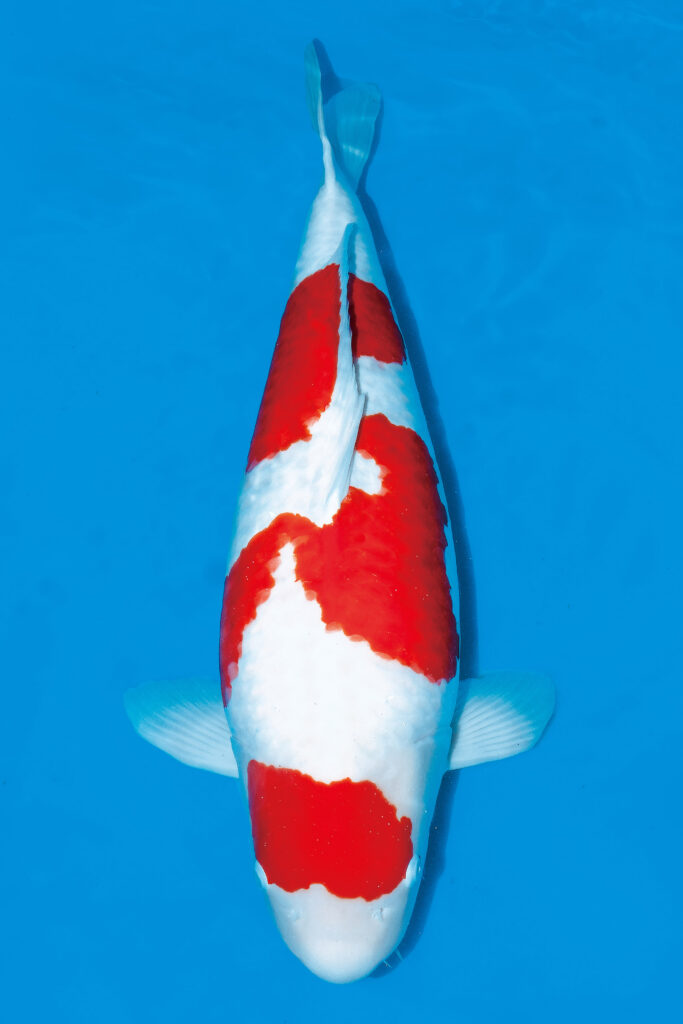
 85部総合優勝/小西-将方(福岡)-683x1024.jpg)
85bu Champion / Konishi Masakazu (Fukuoka)


